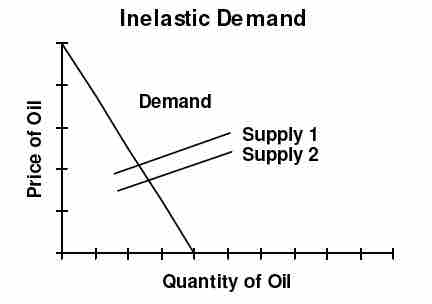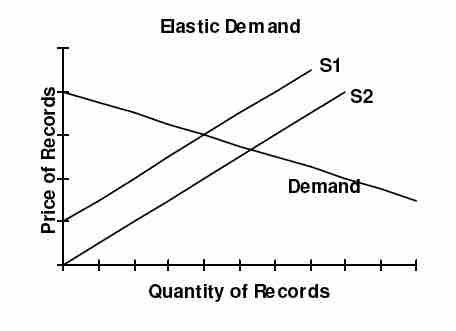In economics, elasticity refers to the responsiveness of the demand or supply of a product when the price changes.
The technical definition of elasticity is the proportionate change in one variable over the proportionate change in another variable. For example, to determine how a change in the supply or demand of a product is impacted by a change in the price, the following equation is used: Elasticity = % change in supply or demand / % change in price.
The price is a variable that can directly impact the supply and demand of a product. If a change in the price of a product significantly influences the supply and demand, it is considered "elastic." Likewise, if a change in product price does not significantly change the supply and demand, it is considered "inelastic."
For elastic demand, when the price of a product increases the demand goes down. When the price decreases the demand goes up. Elastic products are usually luxury items that individuals feel they can do without. An example would be forms of entertainment such as going to the movies or attending a sports event. A change in prices can have a significant impact on consumer trends as well as economic profits. For companies and businesses, an increase in demand will increase profit and revenue, while a decrease in demand will result in lower profit and revenue.
For inelastic demand, the overall supply and demand of a product is not substantially impacted by an increase in price. Products that are usually inelastic consist of necessities like food, water, housing, and gasoline. Whether or not a product is elastic or inelastic is directly related to consumer needs and preferences. If demand is perfectly inelastic, then the same amount of the product will be purchased regardless of the price.
Economists study elasticity and use demand curves in order to diagram and study consumer trends and preferences. An elastic demand curve shows that an increase in the supply or demand of a product is significantly impacted by a change in the price . An inelastic demand curve shows that an increase in the price of a product does not substantially change the supply or demand of the product .

Inelastic Demand
For inelastic demand, when there is an outward shift in supply and prices fall, there is no substantial change in the quantity demanded.

Elastic Demand
For elastic demand, when there is an outward shift in supply, prices fall which causes a large increase in quantity demanded.